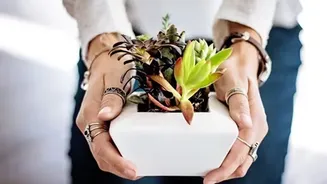The Double Grind
The 2020s have seen a substantial increase in students engaging in side hustles compared to the 1980s. This isn't merely a casual observation but a statistically
significant trend that reflects a shift in how young people approach their education and careers. The term "double grind" perfectly encapsulates this phenomenon: the commitment to both academic pursuits and supplemental income-generating activities. This dual focus is driven by a complex interplay of economic factors, evolving career expectations, and a desire for greater financial autonomy early in life. The nature of these side hustles varies widely, from freelancing and online content creation to more traditional part-time jobs. This diversification reflects not only the adaptability of students but also the diverse opportunities available in the modern economy.
Economic Pressures Mount
One of the most significant drivers of the double grind is the escalating financial pressures faced by students. The cost of higher education has soared in recent decades, leading to increased student loan debt. Living expenses, including housing, food, and other necessities, have also become more expensive. These financial realities force many students to seek additional income sources to cover their costs and reduce their reliance on loans or parental support. The economic climate of the late 2010s and the 2020s has presented unique challenges, including job market volatility and the rising cost of living. Consequently, side hustles provide a way for students to navigate economic uncertainty, build financial resilience, and gain control over their financial futures. This economic landscape has led to a situation where the side hustle is not merely an option but often a necessity for students striving to achieve financial stability while pursuing their educational goals.
Shifting Career Expectations
Beyond economic pressures, evolving career expectations are reshaping the student experience. Many students now view side hustles not just as a means to earn money but as opportunities to gain valuable skills and experience. The traditional path of completing a degree and then securing a full-time job is giving way to a more entrepreneurial approach. Students leverage side hustles to explore different career paths, develop professional networks, and build a portfolio of work. This shift reflects a broader societal change toward valuing practical skills and real-world experience. The side hustle allows students to experiment with different industries and roles, thereby increasing their employability after graduation. Moreover, the flexibility offered by many side hustles allows students to better balance their academic responsibilities with their professional endeavors. They can create their own schedules, choose projects that align with their interests, and gain independence.
Diverse Income Streams
The types of side hustles embraced by students are incredibly diverse, reflecting a wide array of interests and skills. Many students engage in freelancing, offering services such as writing, graphic design, web development, and social media management. The gig economy has provided a platform for students to leverage their talents and earn income on their own terms. Another common avenue is content creation, including blogging, video production, and podcasting. This allows students to monetize their passions and build an audience. Traditional part-time jobs, such as retail and food service, remain common, particularly for those seeking stable, consistent income. Additionally, the rise of e-commerce has led to many students starting online businesses, selling products through platforms such as Etsy or Amazon. The diversity of income streams reflects the entrepreneurial spirit and the adaptability of students navigating the contemporary landscape.















